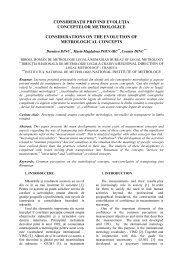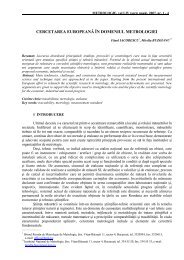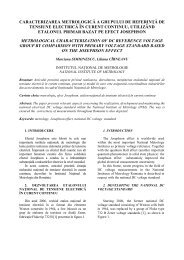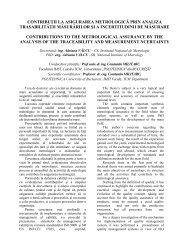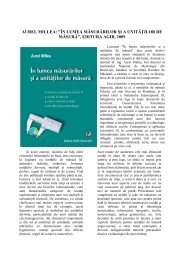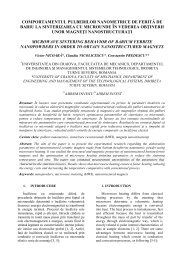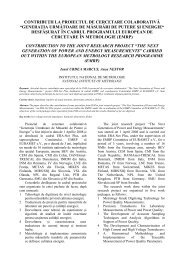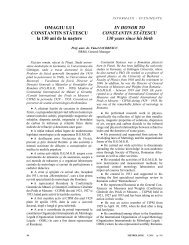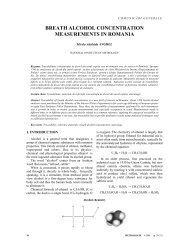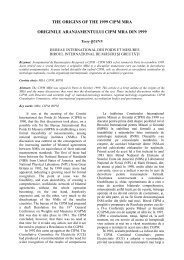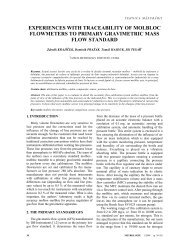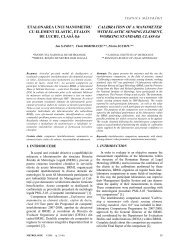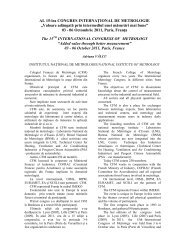passive and active compensations for current transformers - Agir
passive and active compensations for current transformers - Agir
passive and active compensations for current transformers - Agir
You also want an ePaper? Increase the reach of your titles
YUMPU automatically turns print PDFs into web optimized ePapers that Google loves.
PASSIVE AND ACTIVE COMPENSATIONS FOR CURRENT TRANSFORMERS<br />
Fig. 5. Model <strong>for</strong> <strong>current</strong> trans<strong>for</strong>mer<br />
at medium frequencies.<br />
These are common equivalent diagrams of a<br />
trans<strong>for</strong>mer except <strong>for</strong> the capacitors. The capacitors<br />
C 1 <strong>and</strong> C 2 are the lumped stray capacitance of the<br />
primary <strong>and</strong> secondary winding, respectively, <strong>and</strong><br />
C 12 is the stray capacitance between the windings.<br />
At low frequencies such as 50 Hz they may be<br />
negligible but <strong>for</strong> higher frequencies they may <strong>for</strong>m<br />
several resonance circuits, together with the leakage<br />
<strong>and</strong> burden reactance, at various frequencies.<br />
From Figure 5, it can further be deducted that<br />
grounding (that affects the voltage across C 12 )<br />
as well as the loading (including long cables),<br />
especially inductive or capacitive loading, may<br />
well affect the frequency response.<br />
In some situations, the equivalent circuit<br />
diagram of Figure 5 may be reduced to the circuit<br />
diagram according to Figure 6.<br />
Fig. 6. Simplified model.<br />
corresponds to the ratio of real trans<strong>for</strong>mation (k I )<br />
<strong>and</strong> it is related to parameters L, l ,ω, R’= R + r<br />
(Figure 8). The perfect conditions <strong>for</strong> a <strong>current</strong><br />
trans<strong>for</strong>mer are: inductance L has an infinite value,<br />
the values of l <strong>and</strong> R’ negligible.<br />
– the phase response:<br />
R + r<br />
Θ = arctan (6)<br />
ω L + ωl<br />
Fig. 8. Errors in the measurement of <strong>active</strong> power<br />
due to H ( ω ) .<br />
The phase Θ is the image of the phase between<br />
the primary <strong>current</strong> <strong>and</strong> the <strong>current</strong> on resistance<br />
R’. The evolution of Θ according to L, l, ω <strong>and</strong> R’<br />
has paces obtained by calculation (Figure 9).<br />
Inductance L influences much more the phase; a<br />
low value increases Θ. The inductance l must be<br />
limited. The resistance of the shunt R must be low.<br />
Let us analyze the propagation of the errors<br />
affecting the measurement of power <strong>and</strong> energy<br />
one can use a simply model of <strong>current</strong> trans<strong>for</strong>mer-<br />
Figure 7.<br />
Fig. 7. Model of <strong>current</strong> trans<strong>for</strong>mer.<br />
One can determine easily the frequency response<br />
H(jω):<br />
– the amplitude response:<br />
H<br />
( ω)<br />
2<br />
2<br />
ωL<br />
( R + r)<br />
+ ( ωL<br />
+ ωl)<br />
= (5)<br />
2<br />
2<br />
( R + r)<br />
+ ( ωL<br />
+ ωl)<br />
Fig. 9. Errors occurring in the measurement<br />
of <strong>active</strong> power due to Θ.<br />
METROLOGIE 4/2008 7



